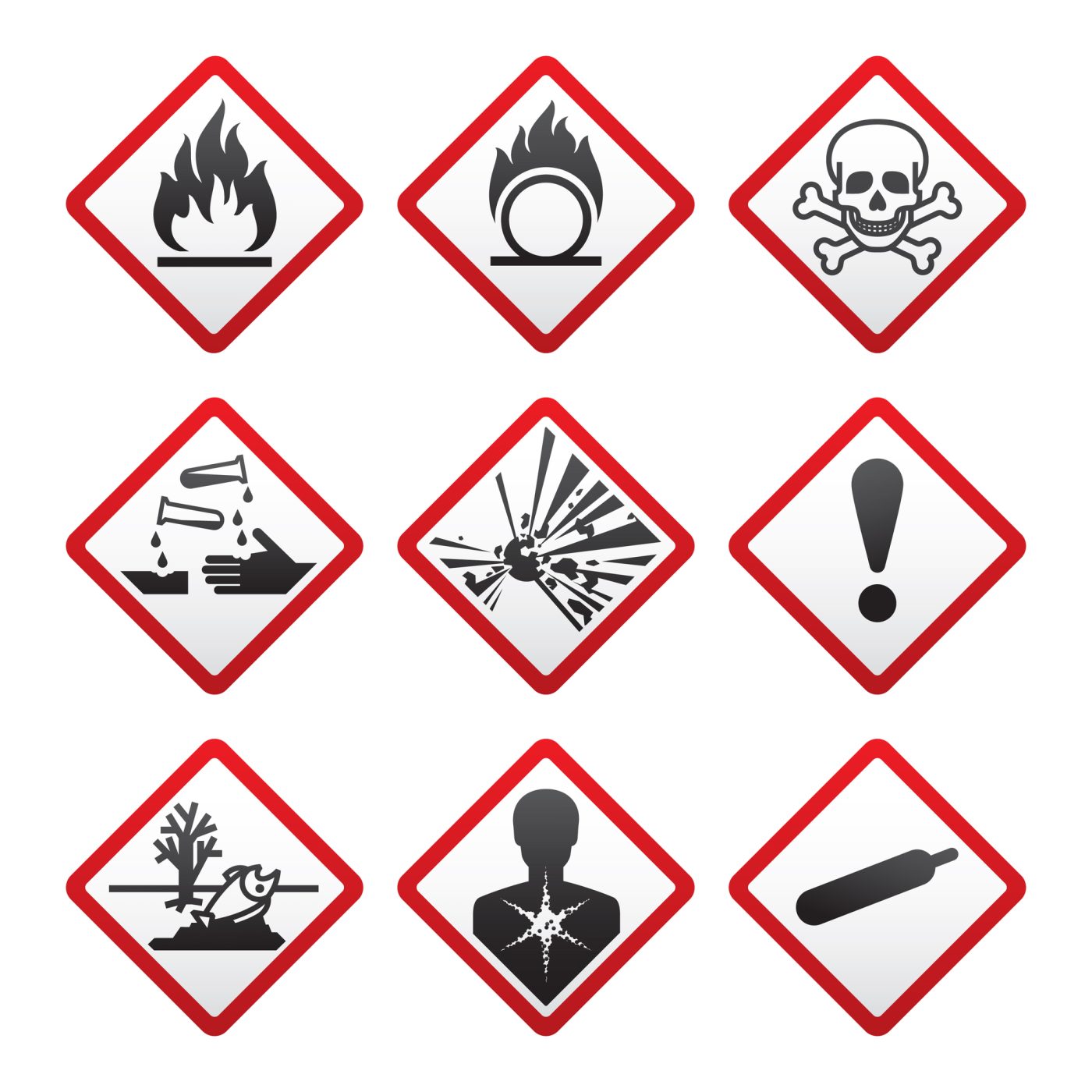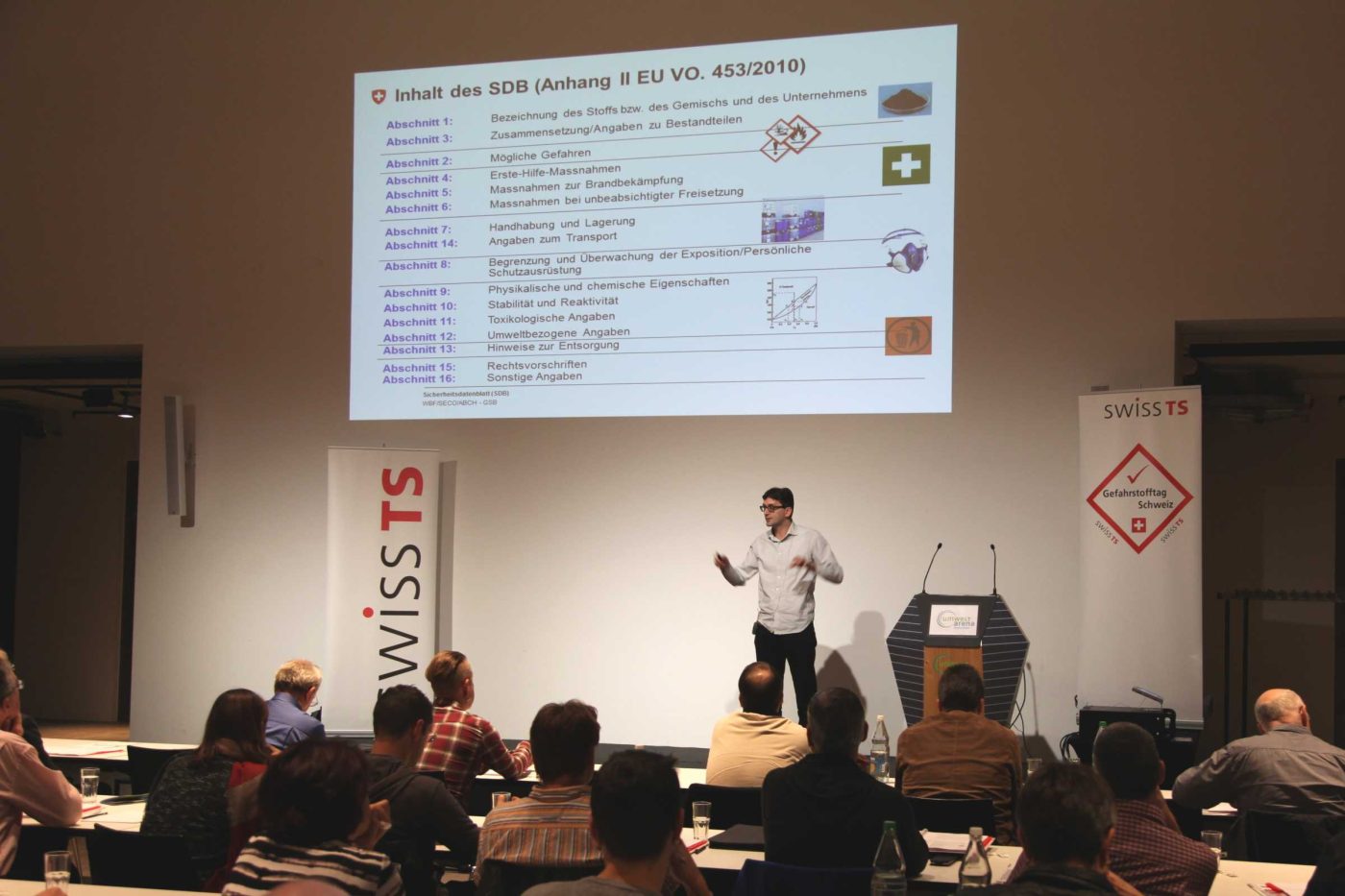First GHS experiences
The Globally Harmonized System for the labeling and classification of hazardous substances has also been fully introduced in Switzerland since mid-2015. The 5th Hazardous Substances Day Switzerland of the Swiss TS showed, among other things, what the first experiences with the system are and where there are still uncertainties.
The 5th Hazardous Substances Day Switzerland drew a red thread from GHS (Globally Harmonized System) and its implementation to the consequences of improper disposal of chemicals as well as the perennial safety data sheet to various workshops.
Experience with GHS
The Globally Harmonized System for the globally uniform classification and labeling of hazardous substances has been fully implemented in Switzerland since the beginning of July 2015, and the final sales deadlines are running. Markus Hofmann from the Federal Office of Public Health (FOPH) gave an introductory presentation of what has already been achieved and what still needs to be done. "The GHS is absolutely necessary, especially in times of globalized trade; we needed a system with harmonized criteria," he said. Hofmann shared initial lessons learned with participants and addressed various scenarios and special regulations. He still sees ambiguities in various questions, and he also sees a continuing need for a great deal of information. One important point for Hofmann is: "GHS answers the question of whether there is a hazard. But GHS is not yet risk management."
Knocking on the barrel is not enough
"Actually, I am 73 days late with this presentation," then said Benjamin U. Müller, managing director of the SMDK consortium and overall project manager for the remediation of the hazardous waste landfill in Kölliken. "After all, there has been no hazardous waste at our site for 73 days and we are no longer subject to the Hazardous Waste Ordinance." Nevertheless, his stories about the consequences and effects of improper disposal of hazardous substances captivated the participants. "At that time, time was pressing; industry and authorities needed a landfill. The hazardous waste landfill was opened in the former clay pit and on a slope, as well as without a precise site evaluation and without sealing. One simply knocked on the barrels to check whether prohibited liquids were inside. More was only known on the basis of the self-declaration of the barrels by the suppliers; there was usually no analysis," Müller recounted.
The story is well known. It stank in Kölliken, the population suffered and the groundwater was polluted. It was decided to clean up and dismantle the landfill. In the meantime, more than 628,000 tons of material have been removed. The project cost 150 million Swiss francs in the securing phase and 711 million francs during the landfill deconstruction. Aftercare will cost another 25 million Swiss francs.
Safety data sheets - a perennial issue
Bojan Gasic, a research associate at the State Secretariat for Economic Affairs (Seco), combined theory and practice to address safety data sheets, which continue to raise questions among company managers. "A safety data sheet is part of the self-regulation of manufacturers," Gasic said. "However, it is not a free pass at all!" He stressed the importance of these SDSs for taking necessary steps around health and safety, workplace safety, environmental protection and supply chain communication. And he addressed various ambiguities and special cases, emphasizing, "The devil is often in the details. You have to check very carefully whether the SDS is correct, even if you only imported a hazardous substance. Because an importer is considered a manufacturer."
Workshops
In the afternoon of the 5th Hazardous Substances Day Switzerland, various parallel workshops were held to take into account the different interests of the participants. Volker Wittmann, project manager of Swiss TS Technical Services AG, spoke to a group about explosion zones for hazardous substances: "Recognizing risks is not easy," said Wittmann, but he also showed the participants ways and methods of fulfilling their responsibilities in the best possible way. Christoph Blülle of Maagtechnic AG and Johanna Hühn of KCL GmbH addressed the range of gloves against chemicals in Ex zones. "Not every protective glove is suitable for every chemical," Hühn emphasized.
There was also room for the participants' very individual questions in a workshop. Matthias Mettke, conference leader and dangerous goods and hazardous substances expert at Swiss TS, answered questions and concerns from the floor: When does a product have to be reported to the FOPH, do we need an SDS with new labeling even for products that are already in use, are we still subject to the Hazardous Incident Ordinance, are we allowed to rewrite and add to an SDS ourselves, what makes sense and what is the law, can pictograms also just be black, and where is the best place to keep an SDS?
Information and advice
These and many other questions were discussed in detail and sometimes controversially. They made it clear that dealing with hazardous substances requires regular information and, in many cases, competent advice. For this reason, too, one can already look forward to the next, 6th Hazardous Substances Day Switzerland. It will take place on November 10, 2016. The program will be available from summer 2016 at www.gefahrstofftag.ch be apparent.
By Stefan Kühnis, freelance journalist BR specializing in safety, on behalf of Swiss TS Technical Services AG











